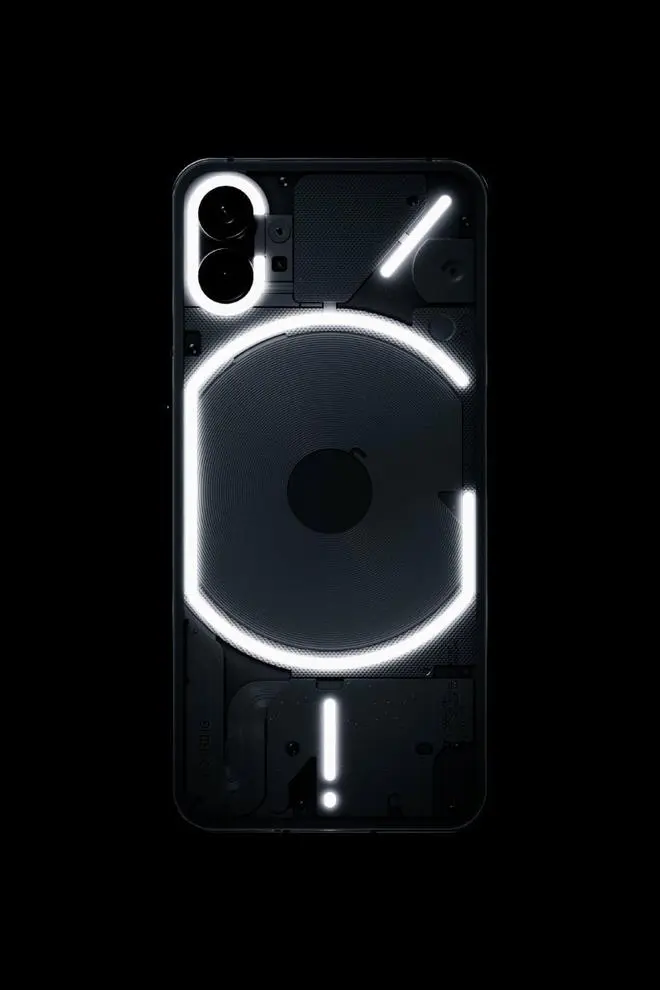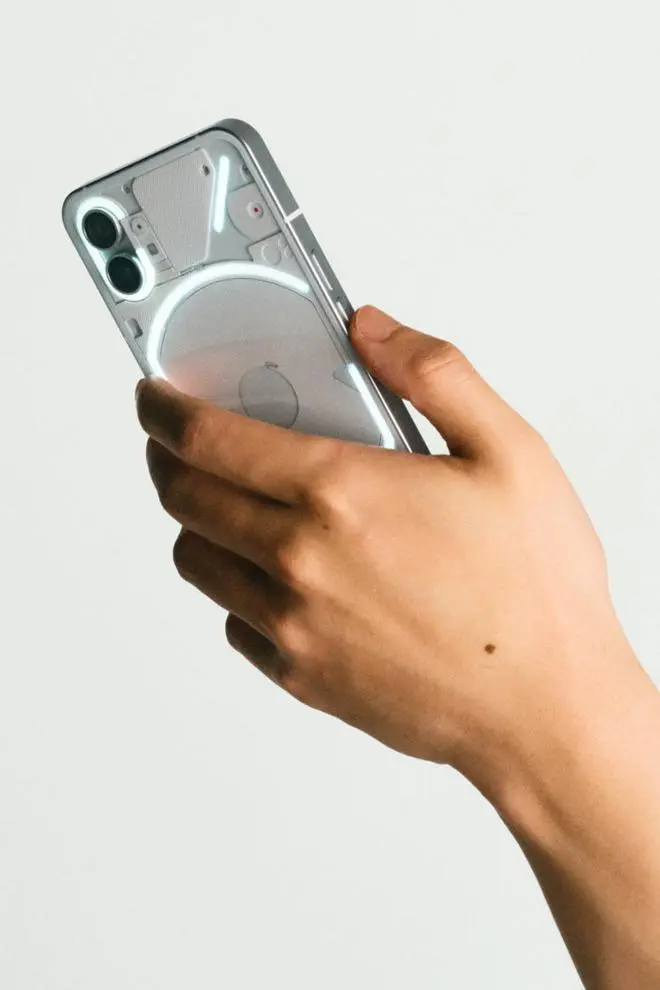The folks at Nothing know very well how to hyper-hype a product. The company is, after all, founded by Carl Pei, who is also the founder of OnePlus, which he eventually left to its own devices. Carl Pei has, not one, but many strategies playing out to get his second Nothing product talked about. The brand’s strange name, the resemblance to a certain phone from Cupertino, and persistent teasing have all gone into making sure the buzz reaches a fever pitch. Well, it worked for OnePlus; it worked for the Nothing Ear1 earphones (530,000 units sold) and now in overdrive for the new phone. Of course, hype does not necessarily guarantee a product that justifies the noise. But it could - at least partly.
The Nothing Phone or phone (1) to give it its proper name, is different right from the packaging onwards. It comes in the slimmest phone box to wonder if there was a device in there at all. It was obvious there was to be no charger, which is a rather sorry state of affairs considering this is their first phone. Unlike Apple or Samsung or a host of other companies, there isn’t a legacy of chargers lying around. So you will have to buy one — add about ₹2,000 — or will need to use some other phone’s charger. There’s a uniquely designed SIM ejector pin in the box, but other than that just the cable, literature, and a transparent back case. Oh well.

The phone itself is lightish and fairly slim, except that it’s also broad and feels larger than it is. To use a case or not is going to be quite a dilemma because it can get knocked out of one’s hand and get damaged in a fall but its main show-off feature, the lights on the back, will not look so great with a case. Unless they create funky ones to work with the lights and unique design on the back.

The design of the phone (1) is a key factor in whether it will be a big hit or not. It’s iPhone-shaped with the much-imitated boxy flat look and general impression it gives. Nothing is happy for everyone to saying its in name in the same breath as the iPhone because they want it to seem like an alternative to that phone. It quite simply isn’t, no matter how many elements are lifted off.
Nothing phone (1) overview
Glyph light show
The back of the phone (1) is its most unique feature, addressing the sheer boredom everyone is experiencing with these devices all looking the same, but for minor variations in colour. The glass back is transparent, showing a few of the innards, just as was the case with the ear (1) earphones. There’s a black and a white version and both have their own charm. Under that glass are 900 tiny LED lights. It’s these that Nothing calls the ‘Glyph Interface”. These lights turn on when you open the camera app with the rear lens ready to shoot in the Photo mode. You must have the option turned on from settings to begin with. You can use them as a fill instead of a flash (there’s that too). But it is rather bright and can be a little blinding and distracting if you’re shooting a person. If you’re taking a candid shot, it’ll give you away. It works only with the rear camera, not the front since you’re shooting yourself.

The Glyph lights have their own tab under the main settings, but you can’t do too much with them such as change the colours. The brightness is rather high even at a low level. The more useful thing that the lights do is flash in different patterns for your contacts - you have to choose and set them. The phone has a really fun set of ten ringtones that are unique and can be mapped to contacts.
The lights flash when you get notifications and show the battery charging status. All this is a great party trick but time will tell whether users take it beyond the novelty level. Personally, I would turn them off almost immediately. These notification alerts etc require you to place your phone face-down, making one feel a little nervous.. The device does come with a protective guard already in place, but still. The lights don’t have too much impact on the battery, which is a good thing, but one possible flip-side is if these lights go through their natural life cycle and die out. I’m not sure if there’s a way of dealing with that or if it’s even a real danger. The lights also have a yellow-green border that’s decidedly strange.
Android power
The phone (1) is very much an Android phone; in fact more do than usual because the software is mostly Android 12 except for minimal customisation from the NothingOS interface which brings in their special dotted font, icons and elements that go with the design and the Glyph interface and a few more details. Otherwise, it’s comparable to the Pixel and comes with no bloatware and other silliness. This is something that the tech savvy and reviewers absolutely love. This squeaky clean experience is truly welcome in a universe of phones where this is hard to find. The phone works very smoothly, specially with the 12GB RAM and 256GB storage. The chipset, which is a Qualcomm Snapdragon 778G+ 5G. It should have perhaps been from the next level series, but it still does work well for everyday tasks and even a bit of gaming. I found only the very slightest warming up occasionally but certainly not as much as on most other phones.

The phone (1)’s 655-inch display is a perfectly nice OLED that has a brightness level of 500 nits. It should have perhaps been brighter but it does peak at 1200 nits. One of the nicest things is the even and thin edges all around. The screen does have a 120Hz refresh rate raising from 60Hz when given certain kinds of content that call for it.
The fingerprint sensor is under-display and works adequately though not noticeably rapidly. There are stereo speakers flanking top and bottom but they’re just average. This phone doesn’t have a headphone jack - not that it was expected. It doesn’t have a memory card slot either. It does have IP53 splash resistance, so a few drops won’t hurt it. The battery is a 4,500mAh with 33W charging, 15W wireless charging and 5W reverse charging. But no charger. Haptic feedback is nice enough though I personally tend to like it a bit stronger such as on the OnePlus 10 Pro.
The camera set includes a 50MP Sony IMX766 main camera and 50MP Samsung JN1 ultra-wide. The Nord 2T uses the same primary. Images resulting from the primary are good without over-saturating the colours. Night time photos are impressive and noise free. Dynamic range and exposure is good. There is the usual drop in quality with the ultra-wide lens. The front camera does a satisfactory job. Having had the phone only for a couple of days, I will reserve comments until I’ve had time to explore it further.
The price of the phone (1) starts from ₹32,999 and goes up to ₹38,999 depending on the RAM and storage variant you choose. It is to be found on Flipkart. It’s generally been considered a good price






Comments
Comments have to be in English, and in full sentences. They cannot be abusive or personal. Please abide by our community guidelines for posting your comments.
We have migrated to a new commenting platform. If you are already a registered user of TheHindu Businessline and logged in, you may continue to engage with our articles. If you do not have an account please register and login to post comments. Users can access their older comments by logging into their accounts on Vuukle.